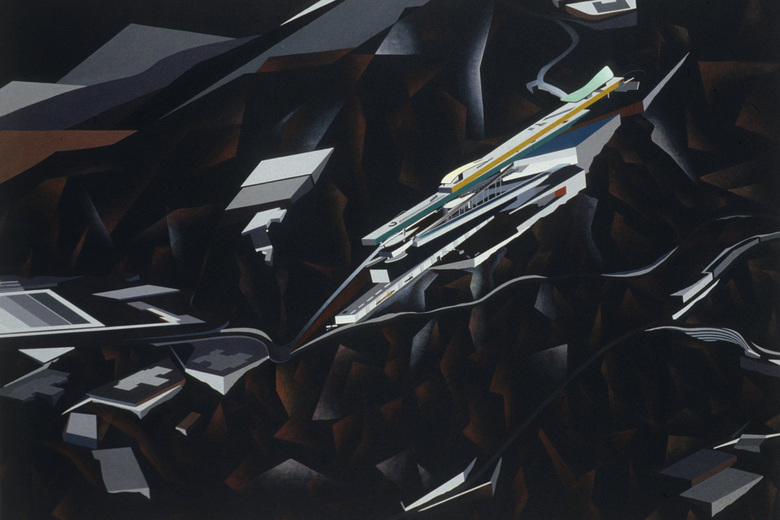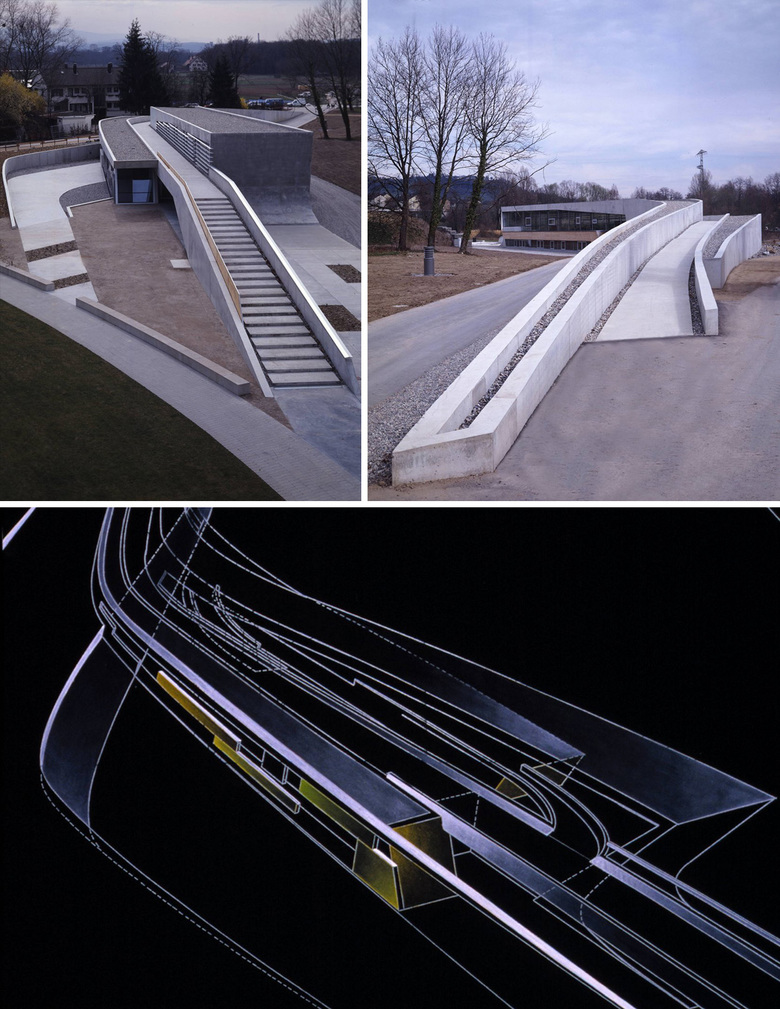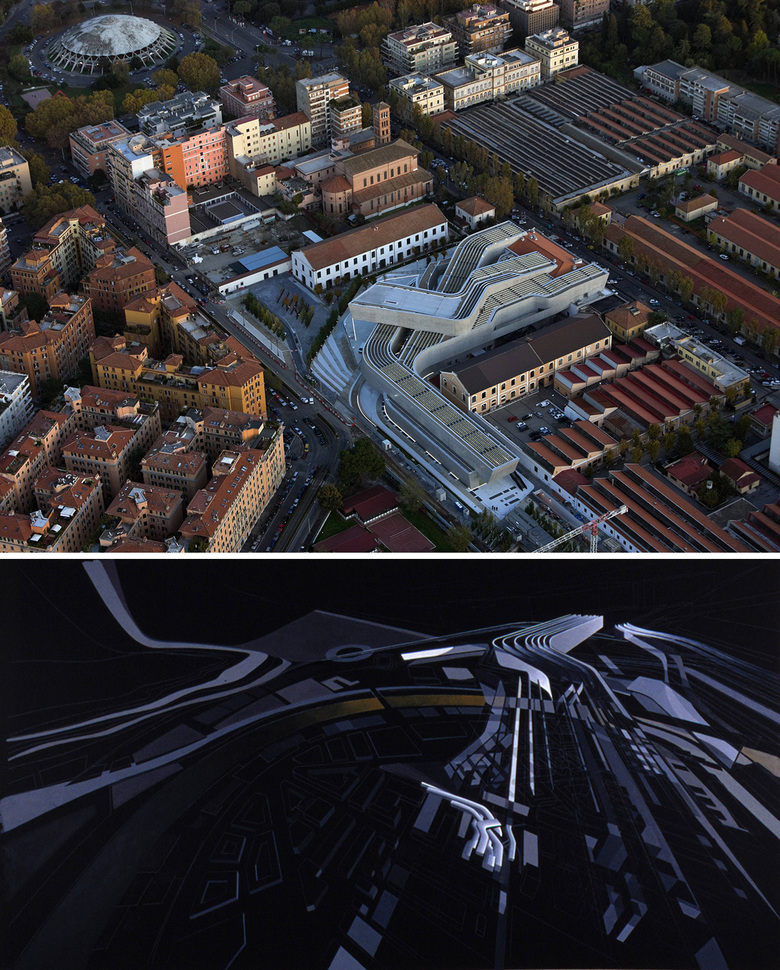Remembering Hadid Through Her Paintings
John Hill
1. April 2016
The Peak Leisure Club, Hong Kong, 1983 (Image: Zaha Hadid Architects)
With the sudden passing of Zaha Hadid yesterday at the age of 65, we look back at some of the Pritzker Prize-winning architect's signifcant works through the unmistakable, dazzling, and often mind-boggling paintings she produced for much of her career.
It was with the 1983 competition win for The Peak in Hong Kong that Zaha Hadid and her distinctive paintings became known to architects around the world. That project remained unbuilt, and it would take another ten years for the completion of her first major building. So for a while she was known purely for the paintings that depicted her designs dynamically inserted into almost alien landscapes where buildings and natural features merged. This approach tempered as her office gained more commissions, but in the long run the paintings gave Hadid the "artist" label, something she shunned even as she admitted an artistic side to her work. Artistic? Yes, but the paintings are first and foremost architectural explorations that laid the basis for a fruitful career. Below we feature a handful of projects documented through photographs and Hadid's beautiful paintings.
Vitra Fire Station, Weil am Rhein, Germany, 1993: Hadid's first built work is a small building that is anything but diminutive in the way the lines of the painting reach out to the agricultural landscape beyond. The building appears to do the same through its cantilevered prow and angular walls. (Photo: Christian Richter; Painting: ZHA)
Hoenheim-Nord Terminus and Car Park, Strasbourg, France, 2001: Hadid's first major award – the EU-Mies van der Rohe Award in 2003 – came with this concrete structure, whose angular roof extends into the landscape through markings on the sizable parking lot. (Photo: Roger Rothan; Painting: ZHA)
Landesgartenschau / LF One, Weil am Rhein, Germany, 1999: Hadid's next building was close to the Vitra campus, built for a flower expo but made permanent. In its use of curves rather than sharp angles, the building foreshadows the complex geometries she would produce with partner Patrik Schumacher. (Photos: Hélène Binet; Painting: ZHA)
Rosenthal Center for Contemporary Art, Cincinnati, OH, USA, 2003: Hadid's first work in the United States was a museum focused exclusively on temporary exhibitions. Hadid envisioned the building connected to its urban context through an "urban carpet" and a 3D jigsaw puzzle of forms housing the galleries. (Photos: Roland Halbe; Painting: ZHA)
MAXXI: Museum of XXI Century Arts, Rome, Italy, 2010: Hadid won the Pritzker Prize in 2004, six years before MAXXI opened to the public but as many years after she started on the lengthy project. This masterpiece garnered her the first of two RIBA Stirling Prizes. (Photo: Courtesy of ZHA; Painting: ZHA)
If the thorough archive of ZHA's website is any indication, Hadid's paintings gave way after MAXXI, which she started working on in 1998, to computer models, renderings and animations. The paintings were of a time before computers changed architecture but their effect lasted: they paved the way for an approach to architecture that prioritized dynamic forms and strong visual and physical connections to context. Just as ZHA's recent buildings are unthinkable without computers, none of their output would have been possible without the paintings that served as remarkable vehicles for expressing Hadid's one-of-a-kind vision.
Related articles
-
Or: $91,000 Per Square Foot
on 1/19/24
-
Zaha Hadid's Legacy in Cincinnati
on 10/5/23
-
A Sunny Legacy
on 2/6/23





